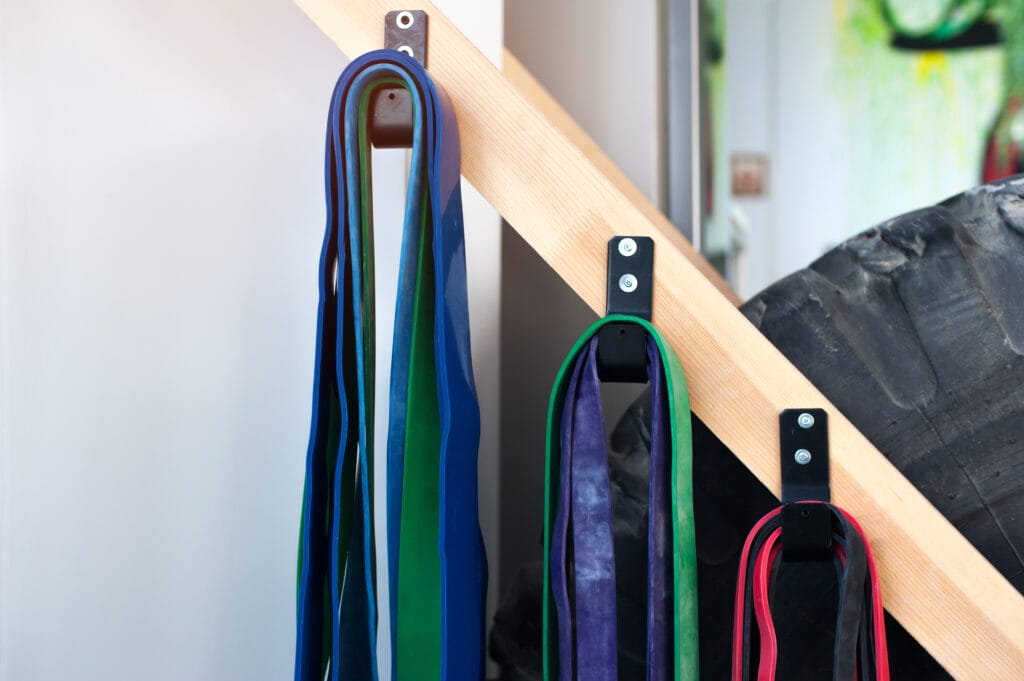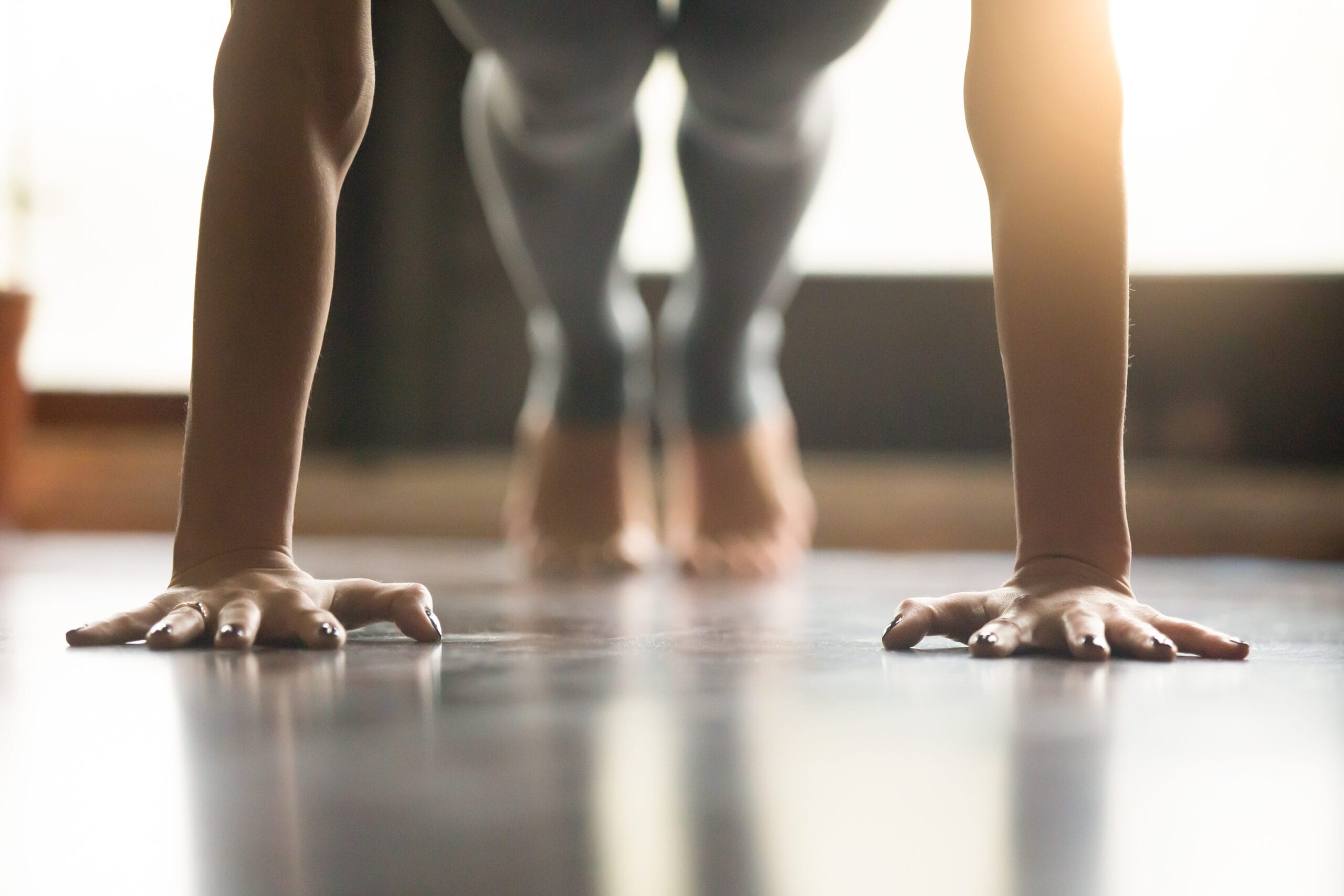
Staying active and exercising regularly is an important part of healthy aging and yes, this includes strength training.
Unfortunately though, whether it be due to pain, mobility issues, or increased fall risk, seniors often have a harder time getting this crucial exercise in.
Which in itself can create a vicious cycle of our seniors becoming weaker and it becoming increasingly difficult to get the exercise they need.
Fortunately, seniors don’t need any elaborate home gym setups or any expensive equipment to get some beneficial strength training in.
All it takes is a few resistance bands and a little know how.
And I can provide the know how, but you’ll have to get your own bands.
In this guide, I’ll go over some of the best resistance band exercises our seniors can do to help strengthen their arms, legs, and core.
I’ll also offer some tips regarding how we can adapt these exercises to match the comfort and fitness levels for all seniors (luckily, all these exercises can be done sitting down too).
After reading, you’ll be ready to start your own workout plans from home.
Let’s dive right in.
P.S. You don’t need anything fancy when it comes to resistance bands. A set of handles and a door anchor certainly come in handy, but it’s all about personal preference. This complete resistance band set is affordable and comes with everything you need to get started.
| Band Pulls | Trunk Rotations |
| Rows | Shoulder External Rotation |
| Straight Arm Pulldowns | Shoulder Diagonals |
| Lateral Stepping | Bicep Curls |
#1 Band Pulls
This is a great exercise for strengthening the important postural muscles in your back, but it also opens up our chest and strengthens our posterior shoulders.
You know, basically undoing the postural damage sitting in a chair or in front of a computer all day does.
As we age, our shoulders become more susceptible to impingement, the umbrella term that describes when one of the tendons around our shoulder gets pinched and irritated with activity.
This condition is exceedingly common and it’s usually caused by poor posture and muscle imbalances around the shoulder.
Long-story-short: we tend to get overly tight in the muscles in the front of the chest (pecs) and overly weak in the muscles in our upper back (rhomboids, lower trap) and rotator cuff.
This imbalance effects the way our shoulder blade and humerus move together, resulting in a situation where the rotator cuff/biceps tendons get irritated.
Well, band pulls are a great way to combat and even prevent impingement from occurring.
You don’t need much resistance with this exercise because we want to strive for perfect form.
Focus on keeping your shoulder blades down and your palms facing up (shoulder external rotation) and initiate the movement by squeezing your shoulder blades together in the back.
Hold for a second or two and slowly return to the starting position.
You can adapt this exercise as needed – it can be performed standing, sitting with back unsupported, or sitting with back supported against a chair.
#2 Rows
Here’s another great exercise to help strengthen those important postural muscles in your upper back, especially your rhomboids.
It’s also a key exercise in helping to treat or prevent that shoulder impingement mentioned above.
You can use a little more resistance here, so you may need a thicker band, but still focus on strict form:
- make sure you’re keeping your shoulder blades low
- and initiating the movement by squeezing your shoulder blades together in the back
And again, try to hold that isometric contraction in the back for a second or two before returning to the starting position.
To anchor the band, you can loop it around a door knob (and close the door to make sure it doesn’t accidentally open the door), around a stair banister, or any other sturdy place that’ll safely hold it.
This exercise is preferably done standing to challenge balance and ensure full range of motion, but it can be done sitting on the edge of a chair or the edge of your bed.
#3 Straight Arm Pulldowns
This exercise targets the big muscles in your back, your lats, and it’s another great exercise to help avoid falling into that rounded shoulder posture.
And yup, these are the same muscles we work when doing pull ups or lat pulldowns, but this band variation works them remarkably well.
For this exercise, you won’t need a lot of resistance, so definitely start with a lighter band.
You’ll have to anchor the band a bit higher for this move, so using a door anchor can be helpful.
With straight arm pulldowns, you’ll be keeping your elbows straight and pulling the band from a high position down toward your hips.
But we’re still focusing on squeezing the shoulder blades together in the back and maintaining a good upright posture throughout.
This exercise is usually performed standing up, but can be adapted and done sitting on the edge of a chair, as long as you have room to get your arms down by your side. You could also do it kneeling on the floor, which’ll work your core a little harder.
#4 Lateral Stepping
Ok, let’s give the upper body a break and move down to the hips – another important area to keep strong as we age.
Having stronger hips makes all mobility easier (think getting up from a chair or climbing steps), but it also gives us more stability as we walk.
And when it comes to walking, our hip abductors (the muscles on the outside of our hips) are paramount, so it’s a good idea to train them regularly.
And when it comes to strengthening these muscles, few exercises are as effective as resisted lateral stepping.
For this exercise, you’ll want to make sure you’re comfortable side-stepping without resistance before adding that band because the last thing we want to do is cause a fall.
Having a closed loop band is helpful for this exercise, but you can always tie a traditional band above your knees to accomplish the same thing.
Remember to keep your knees bent a little as you step and try to maintain an upright posture (don’t flex forward too much).
And as the above video demonstrates, you can make the exercise more challenging by changing the position of the band.
I’d recommend doing sets of 10 – 20 feet in each direction and don’t be surprised if you’re sore after the first time doing this one.
Alternative exercise – Seated Clamshells
If you don’t feel comfortable with side-stepping or aren’t ambulatory, you can work these same muscles by doing seated clamshells. For this exercise, you’ll wrap the band around your legs, right above your knees, and sit in a chair. Keeping your feet together on the floor, try to open your knees apart as far as you comfortably can, hold for a second or two, and then slowly return to the starting position.
#5 Trunk Rotations
This is a great exercise to work all the muscles in your core, which is really referring to everything between your shoulders and hips.
Maintaining a strong core is important as we age because it can help prevent back pain and injury, but it also makes it easier to do daily tasks around the house.
This exercise involves rotating your back, so if you have any back issues that prevent you from doing this pain free, you’ll want to skip this one and do an alternative exercise.
So, before trying this one, make sure you can rotate comfortably without any resistance.
Speaking of resistance, this is another move where keeping the resistance low is a good idea.
Since your arms will be extended, it doesn’t take much resistance to feel the burn.
While doing these trunk rotations, try to keep your core tight by imagining that you’re pulling your belly button in (like you’re trying to fit in a tight pair of pants).
Also make sure you aren’t holding your breath.
You’ll want to anchor your band at about shoulder height for this one, so again, having a door anchor might come in handy.
You can adapt this exercise to do it sitting down in a chair with your back unsupported or even doing it lying in your bed with a family member holding the other end of the band.
And if you can’t comfortably rotate, you could try this isometric alternative:
#6 Shoulder External Rotation
This is a popular rehab exercise following any type of shoulder surgery and its used to strengthen the rotator cuff.
And even though therapists might rely a little too heavily on it, it’s a good exercise.
If you’re dealing with any type of shoulder pain and have weak rotator cuff muscles, it can certainly be helpful to rebuild that strength, but I like it because it helps open up those shoulders and maintain shoulder range of motion.
As mentioned earlier, anything we can do to keep your shoulders back and opened up as we age is a good thing.
You can do this exercise by anchoring the band at roughly elbow height or you can simply anchor the band with your other hand.
You can even do both shoulders at the same time if you’re holding each end securely.
Make sure you keep your elbows bent at 90° and at your sides as you rotate your shoulders to move your hand out to the side.
Try and keep your shoulder blades down and squeezed together in the back for added challenge.
This exercise can be performed standing, sitting, lying in bed, or pretty much any other position you can think of – as long as the band is anchored in the correct position to work.
#7 Shoulder Diagonals
The OT I work with uses this exercise with pretty much all her patients and I see why – it’s a great exercise.
Not only does it work your deltoids, but it also challenges your scapular stabilizers and lats as well.
And you can adapt this one to fit within your available shoulder range of motion too, so don’t feel like you have to reach all the way up to the sky to get the benefit.
If you have any shoulder issues you’ll want to be careful because you don’t want to feel pain with this move.
Pushing through and forcing your way through shoulder pain is a bad idea.
You also don’t need much resistance with this one, so keep your band light – anytime those elbows are straight, you won’t need much resistance.
You can play with hand positioning a little, but I like to keep the top palm facing up toward the ceiling and the bottom palm facing down.
This exercise can be performed standing, sitting, or even lying on your back in bed, depending on your mobility level.
#8 Bicep Curls
Finally, we have bicep curls, a classic exercise with tons of variations.
This is a good exercise to do with resistance bands because you can do it in several different positions and you don’t have to anchor the band to a door or anything else.
And while it’s great for strengthening your biceps and other elbow flexors, it also helps maintain elbow range of motion as well.
For a true biceps curls, you’ll want to keep your palms facing up toward the ceiling throughout, but you can always turn your hands so that your thumb is facing the ceiling for a different variation (hammer curls).
Either way, make sure you’re keeping your shoulders down and controlling the movement.
I like to hold for a second or two at the top for an extra little isometric squeeze.
In terms of band strength, you’ll likely be able to handle more resistance with this one, so feel free to use thicker bands.
Depending on the length of your band, you can anchor below both feet or just one – putting under both feet shortens it more, making it more difficult.
You can also work both arms at the same time or alternate.
And if you don’t have handles and are using Thera band, you can tie knots in the ends to help maintain a good grip on the band.
This is a great exercise to do standing on the bands, but you can also do it from a seated position with your feet anchoring the band to the floor. You can also do this one lying in bed with the band anchored to your feet.
We Aren’t Exercising Enough
If you’ve found your way here, this likely means you’re making the effort to start implementing more exercise into your routine.
And I applaud you for this!
I doubt this’ll surprise you, but guess what – most of us aren’t getting anywhere near the recommended amount of daily exercise.
And yes, this includes seniors.
According to the CDC, folks aged 65 years and over should be getting at least 150 minutes of moderate intensity exercise per week.
That’s the equivalent of walking briskly for 30 minutes, 5x per week.
Now you can cut that down to 75 minutes a week if you’re exercising at a higher intensity level (jogging, running, swimming, etc), but that’s still a lot more exercise than most of us (seniors or not) are getting.
The CDC also recommends that our seniors strength train at least 2 days/week on top of that.
And according to another CDC study, only about 24% of adults (not just seniors) actually meet these minimum guidelines for both aerobic and strength training guidelines.
And the numbers get even worse the older we get.
According to that study, which looked at 2020 numbers, only about 15% of men over 65 and roughly 10% of women over 65 are meeting these exercises guidelines.
Ouch.
Guys, it looks like we’re doing a little better than the ladies, but we’ve all got a ton of room for improvement here.
Walking is a great way to get your daily exercise in but we can’t ignore strength training because it’s at least as important as the aerobic side.
Especially given how many strength related issues so many of our seniors deal with.
It’s a known fact that we lose muscle mass as we age (sarcopenia), but resistance training can slow down this natural loss of muscle.
And being stronger makes everything easier.
It’s easy to imagine how having stronger legs will make it easier to stand up from low seats and get up and down stairs, but it can also make you feel more stable while walking.
And having stronger arms makes it easier to grab, lift, reach, open, carry, and pretty much any other daily task you can think of.
Yes, resistance training offers a lot of benefits and it’s likely a lot of us could avoid some of the mobility related problems that come with aging if we exercised more.

Sets, Reps, and Frequency
When looking at the above exercises and trying to plan your workout routine, there are a few different routes you could go.
Personally, I like to have my senior patients aim for a total rep count of 30 for most exercises.
This could be 3 sets of 10 reps or 2 sets of 15 reps, with a minute or so rest break between sets. The CDC suggests resistance training at least 2x/week, so that’s a good place to start.
But bumping that up to 3x/week wouldn’t hurt either.
The goal is also to use a resistance band that is challenging enough so that your muscles are feeling fatigued by the time you get to that 10th or 15th rep.
And as you get stronger, don’t be afraid to use harder bands – this is how we get stronger.
If the band you’re using feels easy or you can knock out all 30 reps without resting, it’s time for a harder band.
Also, muscle fatigue (or ‘the burn’) is normal and expected, but we shouldn’t be feeling any pain while doing these exercises.
If you have shoulder problems, some of the above exercises may be difficult and I would encourage you to hold off on anything that causes pain.
In these cases, you may want to see your physician for a possible referral to physical therapy for professional guidance.
Final Thoughts
Looking at the above exercises, you’ll notice that I didn’t include many leg exercises.
I did this because I think resistance bands tend to work better for arm exercises, although the lateral stepping/seated clamshells work wonderfully with resistance bands.
When it comes to working the glutes and quads, I think doing bodyweight exercises like mini-squats, sit-to-stands from a chair, or front step-ups are more effective.
And these are exercises I’d recommend all seniors do as well, but that’s an article for a different day.
And of course walking is great for keeping the legs strong and the heart healthy.
When planning your workouts, the order you do these exercises doesn’t matter, but if you have tight shoulders, you might want to start with the external rotation.
The external rotation tends to help open the shoulders up and get ’em loose, which can be a good warmup before the other moves.
Anyway, I think that about does it.
I hope you found this guide helpful and if you have any questions or comments regarding these exercises, I’d love to hear ’em.
Leave them below and I’ll get right back to you.


